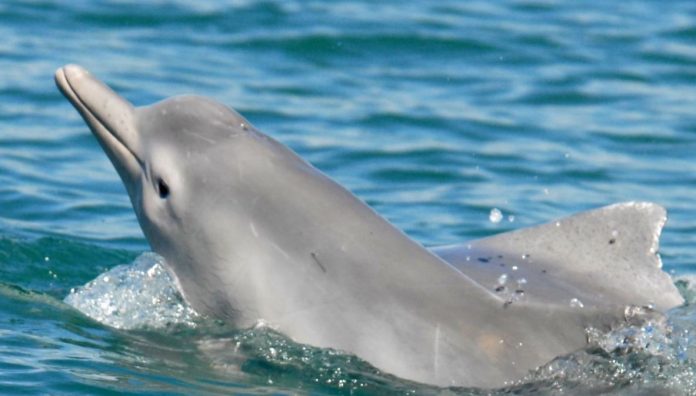Rare snubfin dolphins in Queensland’s Fitzroy River and humpback dolphins in Port Curtis are under threat from exposure to increasing amounts of water contamination, Southern Cross and Flinders University marine scientists warn.
A new study published in Ecological Indicators sampled pollutants in the blubber and skin of humpback and snubfin dolphins in the Fitzroy River and Port Curtis in Queensland between 2014 and 2016. The results were compared to samples collected between 2009-2010.
In only five years, the concentrations of DDTs, PCBs and HCB in both species increased between two and seven times.
With the concentration of land-based pollutants in the Great Barrier Reef increasing over the same period, so is the accumulation of contaminants inside the favourite preys of dolphins, the researchers conclude.
Southern Cross University marine ecologist Dr Daniele Cagnazzi says 68% of the dolphins sampled had accumulated contaminants above levels that may affect their health and long-term survival.
“In the Fitzroy River and Port Curtis between 2011 and 2016 three major floods were recorded in the region compared to an average of one every six years before 2011,” he says.
“Extensive flooding in adjacent catchments is the most likely factor responsible for increased distribution of these contaminants into coastal waters.”
The Fitzroy River catchment has been identified as a major source of contaminants into the Great Barrier Reef including sediment, nutrients and pesticides from agricultural land use and inland coalmines.
In Port Curtis, a wide range of industrial contamination have been detected from shipping, coal stockpiles, power station products, landfill, urban development and sewage treatment.
Dolphins can consume 6% of their body weight in fish daily. As a result, the concentration of contaminants can be up to 200 times higher than what is recorded in their prey.
Flinders University Associate Professor Guido J Parra says climate change models expect intense rainfall events and floods to increase in the Queensland coastal region over coming decades, which in turn exposes dolphins to more potentially harmful contaminants.
“High contaminant levels add to the number of existing threats including climate change, coastal development, underwater noise and vessel disturbances, fishing bycatch and prey depletion faced by these vulnerable dolphin species.”
“The build-up of these dangerous contaminants can lead to population decline. For example, in South East Asia, high concentrations of various pollutants have been linked to the extinction of the Yangtze River dolphin and the ongoing decline of the Indo-Pacific humpback dolphin.”
“As a result, this could have implications on the long-term survival of entire dolphin populations in Queensland.”
Researchers warn water flowing in the Great Barrier Reef is classified as poor quality, and the Fitzroy River Catchment, the Wet Tropics, Burdekin, Mackay Whitsunday and Burnett Mary catchments have been identified as medium to high-risk for land based pollutants.
New ports and mining developments are underway in several locations along the Queensland coast and inland which, if not managed properly, will have an ongoing impact.





























